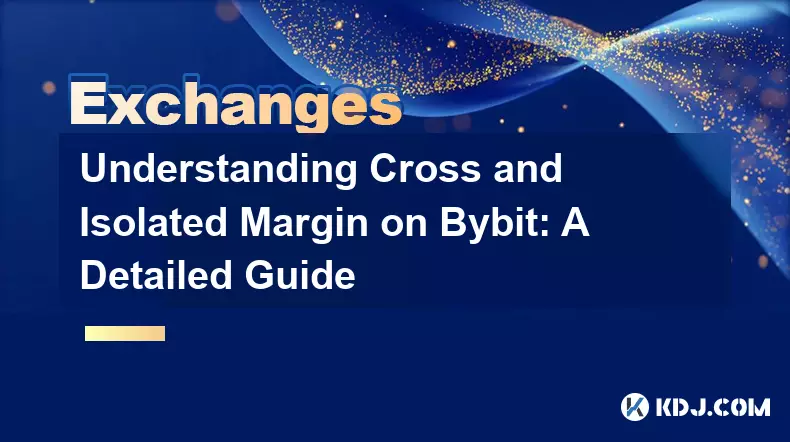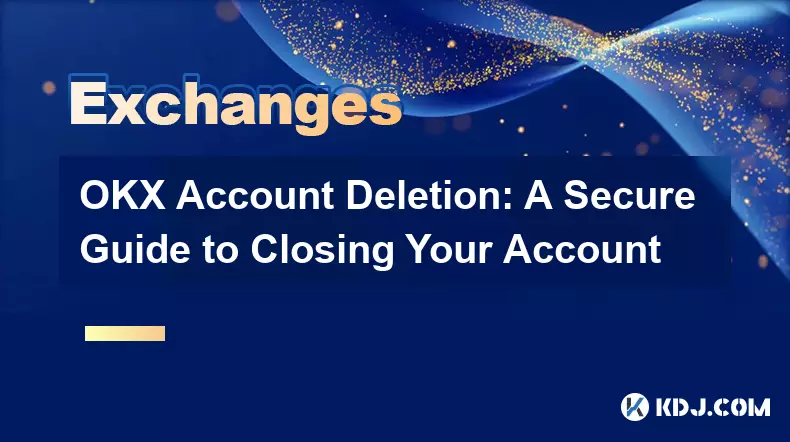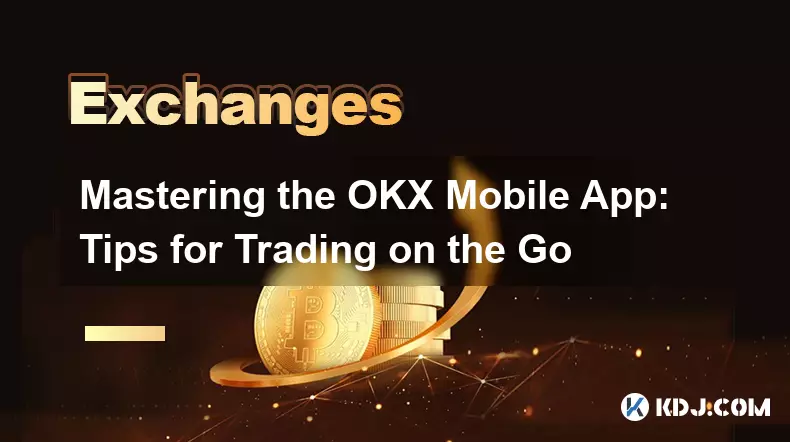-
 bitcoin
bitcoin $103128.103252 USD
-3.33% -
 ethereum
ethereum $3437.127692 USD
-4.86% -
 tether
tether $0.999700 USD
-0.02% -
 xrp
xrp $2.403993 USD
-5.73% -
 bnb
bnb $961.374676 USD
-4.11% -
 solana
solana $154.938665 USD
-8.18% -
 usd-coin
usd-coin $1.000113 USD
0.03% -
 tron
tron $0.298122 USD
0.30% -
 dogecoin
dogecoin $0.172428 USD
-5.76% -
 cardano
cardano $0.557625 USD
-7.13% -
 hyperliquid
hyperliquid $38.740701 USD
-6.51% -
 chainlink
chainlink $15.306051 USD
-7.51% -
 bitcoin-cash
bitcoin-cash $507.558648 USD
-3.26% -
 stellar
stellar $0.281899 USD
-6.74% -
 unus-sed-leo
unus-sed-leo $9.241811 USD
0.57%
Understanding Cross and Isolated Margin on Bybit: A Detailed Guide
Cross margin uses all available funds as collateral, boosting resilience in volatile markets, while isolated margin limits risk to a fixed amount per trade.
Nov 05, 2025 at 01:34 pm

Cross Margin vs. Isolated Margin: Core Differences
1. Cross margin utilizes the entire available balance in a trader’s account as collateral for open positions. This approach increases capital efficiency by pooling all funds to prevent liquidation.In volatile markets, cross margin can help sustain leveraged positions longer due to broader collateral support.2. Isolated margin assigns a fixed amount of equity specifically to a single position. Traders define this amount manually, limiting both risk and potential loss to only that allocated fund.3. The main structural distinction lies in risk exposure. With isolated margin, losses are capped at the designated margin, while cross margin risks more of the account if market movements turn sharply against the position.4. Cross margin is often favored by experienced traders who manage multiple positions simultaneously and rely on overall account strength.5. Isolated margin appeals to those seeking strict control over individual trade risk, especially in high-leverage scenarios where precise loss calculation is essential.
How Cross Margin Functions on Bybit
1. When cross margin mode is activated, Bybit automatically uses the wallet balance of the relevant asset as dynamic collateral. This includes unrealized PNL from other positions contributing to margin support.2. Liquidation occurs only when the total account equity drops below the maintenance margin threshold across all active trades in that asset.This interconnected buffer can delay liquidation during short-term price swings, offering resilience under pressure.3. Traders cannot specify exact margin per position—system allocation is automatic based on current leverage and market conditions.4. High leverage trades benefit from the aggregated equity, but sudden adverse moves may impact multiple positions simultaneously due to shared resources.5. Funding payments and realized PNL directly affect the net equity used in cross margin calculations, altering the safety buffer dynamically with each transaction.
Operational Mechanics of Isolated Margin
1. In isolated mode, users set a fixed initial margin for each contract. This value remains constant unless adjusted manually through margin add or reduce functions.2. Maintenance margin is calculated strictly against the isolated amount, meaning liquidation depends solely on the health of that individual position.Risk containment is maximized because one failing trade does not directly endanger others.3. Leverage settings apply independently per position, allowing different levels across various trades without interference.4. If a trader opens five BTC/USDT perpetual contracts under isolated mode, each operates with its own margin pool, entry price, and liquidation price.5. Adjustments such as increasing margin require deliberate action, giving full transparency and control over capital deployment at the cost of requiring active monitoring.
Choosing Between Modes: Practical Scenarios
1. A scalper executing rapid entries and exits might prefer isolated margin to avoid unintended spillover effects from unrelated positions affecting their stop-loss triggers.2. Trend followers holding long-term leveraged positions may opt for cross margin to leverage accumulated unrealized gains as additional security against drawdowns.3. During periods of extreme volatility, isolated margin offers predictability—knowing exactly how much is at stake reduces psychological stress.Cross margin shines when portfolio diversification provides natural hedging, reducing net exposure despite high nominal leverage.4. New traders testing strategies should consider isolated margin to enforce discipline and prevent catastrophic account depletion from a single miscalculation.
Frequently Asked Questions
What happens to my isolated margin if I close a position early?All remaining equity after fees and PNL settlement returns immediately to the wallet balance. No residual lock-up occurs once the contract is settled.
Can I switch between cross and isolated margin during an active trade?No. Mode selection is locked upon position opening. To change, you must close the current position and reopen under the desired margin type.
Does cross margin increase my effective leverage unintentionally?Not directly. While leverage ratio stays user-defined, the system's use of total equity may create higher exposure than intended if multiple large positions coexist.
Are funding rates affected by margin mode selection?Funding payments are independent of margin type. However, in cross mode, these payments draw from general equity, whereas isolated mode deducts them from the assigned margin pool.
Disclaimer:info@kdj.com
The information provided is not trading advice. kdj.com does not assume any responsibility for any investments made based on the information provided in this article. Cryptocurrencies are highly volatile and it is highly recommended that you invest with caution after thorough research!
If you believe that the content used on this website infringes your copyright, please contact us immediately (info@kdj.com) and we will delete it promptly.
- DESK Token, Tokenized Real Estate, and Venture Hub: A New Era in Digital Assets
- 2025-11-12 16:55:02
- JPM Coin, Blockchain, and Public Tokens: The Future of Institutional Finance?
- 2025-11-12 17:10:00
- Ethereum's Whale Watch: Upgrade Incoming!
- 2025-11-12 17:10:00
- DOGE: Analyzing the Price and Potential – Will Dogecoin Reach $1?
- 2025-11-12 17:10:02
- JPMD, USD Token, and Base Network: JPMorgan's Blockchain Leap
- 2025-11-12 17:10:02
- Treasury Plays Evolve: Beyond MSTR with Blockchain Engineering
- 2025-11-12 17:20:01
Related knowledge

Common Mistakes to Avoid on OKX: A Guide for New Traders
Nov 04,2025 at 03:37pm
Understanding the Interface Before Trading1. New traders often jump into placing orders without fully exploring the OKX platform layout. Taking time t...

OKX TradingView Integration: A Guide to Advanced Chart Analysis
Nov 02,2025 at 03:37am
OKX and TradingView: Bridging the Gap for Professional Traders1. OKX, one of the leading cryptocurrency exchanges, has integrated with TradingView to ...

Finding Your OKX Deposit Address: A Quick and Safe Guide
Nov 05,2025 at 01:15pm
Finding Your OKX Deposit Address: A Step-by-Step Process1. Log into your OKX account using your registered credentials. Ensure you are accessing the o...

OKX Savings Guide: A Low-Risk Strategy for Earning Crypto
Nov 05,2025 at 06:55am
Understanding OKX Savings and Its Role in Crypto Earnings1. OKX Savings offers users a straightforward method to earn passive income by leveraging idl...

OKX Account Deletion: A Secure Guide to Closing Your Account
Nov 05,2025 at 08:44am
Understanding the Implications of Account Closure1. Closing your OKX account permanently removes access to all associated trading features, including ...

Mastering the OKX Mobile App: Tips for Trading on the Go
Nov 05,2025 at 01:19am
Streamlined Navigation for Efficient Trading1. The OKX mobile app features a clean and intuitive interface that allows traders to access key functions...

Common Mistakes to Avoid on OKX: A Guide for New Traders
Nov 04,2025 at 03:37pm
Understanding the Interface Before Trading1. New traders often jump into placing orders without fully exploring the OKX platform layout. Taking time t...

OKX TradingView Integration: A Guide to Advanced Chart Analysis
Nov 02,2025 at 03:37am
OKX and TradingView: Bridging the Gap for Professional Traders1. OKX, one of the leading cryptocurrency exchanges, has integrated with TradingView to ...

Finding Your OKX Deposit Address: A Quick and Safe Guide
Nov 05,2025 at 01:15pm
Finding Your OKX Deposit Address: A Step-by-Step Process1. Log into your OKX account using your registered credentials. Ensure you are accessing the o...

OKX Savings Guide: A Low-Risk Strategy for Earning Crypto
Nov 05,2025 at 06:55am
Understanding OKX Savings and Its Role in Crypto Earnings1. OKX Savings offers users a straightforward method to earn passive income by leveraging idl...

OKX Account Deletion: A Secure Guide to Closing Your Account
Nov 05,2025 at 08:44am
Understanding the Implications of Account Closure1. Closing your OKX account permanently removes access to all associated trading features, including ...

Mastering the OKX Mobile App: Tips for Trading on the Go
Nov 05,2025 at 01:19am
Streamlined Navigation for Efficient Trading1. The OKX mobile app features a clean and intuitive interface that allows traders to access key functions...
See all articles


























![[4K 60fps] no care by crashpancake2 (1 Coin) [4K 60fps] no care by crashpancake2 (1 Coin)](/uploads/2025/11/12/cryptocurrencies-news/videos/6913a8862890b_image_500_375.webp)















































